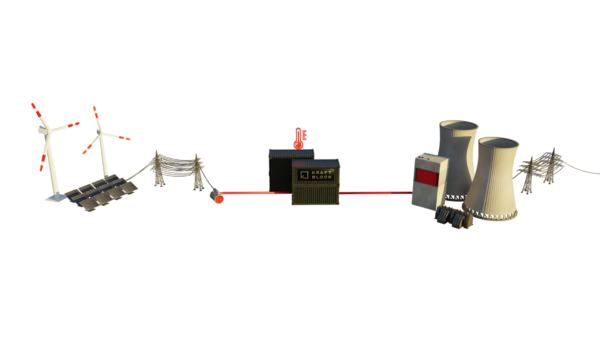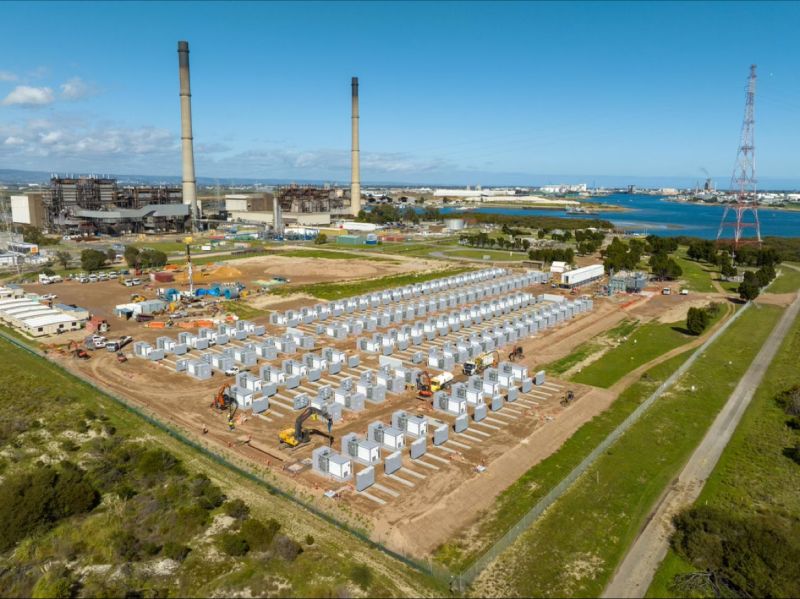The federally-run Australian Renewable Energy Agency (ARENA) announced it will give $422,582 (USD 268,400) in funding to AGL Energy, Australia’s biggest electricity “gentailer”, to study the viability of retrofitting the Torrens Island Power Station B near Adelaide with thermal energy storage technology.
Thermal storage relies on the concept of heating or cooling a storage medium so it can be used later for heating and cooling applications.
The $1.01 million feasibility study, set to last one year, has shortlisted two thermal storage suppliers: German manufacturer Kraftblock and Australia’s MGA Thermal.

Image: Kraftblock
Kraftblock’s solution proposes to use use synthetic pellets comprised of up to 85% recycled material as the heat storage medium to achieve operating temperatures of up to 1300°C.
MGA Thermal, on the other hand, will use its proprietary Miscibility Gap Alloy (MGA) technology as the heat storage medium for operating temperatures of up to 760 °C.
The idea is to provide eight hours of heat to Torrens B power plant, at this stage using grid electricity to charge what is essentially a thermal battery. Given South Australia already regularly generates a surplus of renewable energy, presumably the thermal batteries would charge during the daytime and could eventually run solely on renewable sources.
The thermal storage would then hopefully be able to generate enough steam to spin the plant’s preexisting steam turbine. Of course, this configuration has the added bonus of using existing infrastructure like the grid connection and transmission lines already going to Torrens Island.
If the concept works, the Torrens Island fossil fuel power station could be converted to green energy with thermal storage – a solution ARENA said it expects to be replicable and scalable with other thermal generators across Australia’s grid.
“Given the potential long lead time and geographic constraints of other storage technologies, alternative pathways such as retrofitting existing power stations with thermal energy storage could be a viable solution to add to the mix and address Australia’s medium duration storage requirements,” ARENA CEO Darren Miller said of the project.
“If we develop a blueprint here to run the generators needed for grid stability on green heat, then we have another way to generate sustainable power,” Kraftblock CEO Martin Schichtel said of the project.
Australia is expected to need more than 60 GW of dispatchable generation and storage by 2050 to support the uptake of renewable energy, according to the Australian Energy Market Operator (AEMO).
The most pressing need within this decade is for medium duration storage, between four to 12 hours, necessary for managing daily variations in solar and wind output as coal generators shut.
Torrens Island
The $180 million Torrens Island battery will be delivered by Finnish technology company Wärtsilä an will initially start out with a one-hour duration but will be capable of expanding to up to four-hours duration in the future (1000 MWh).
In June, AGL also announced it would head up a consortium of industry partners to look into whether the Torrens Island facility could become a green hydrogen hub for domestic users and export.
This content is protected by copyright and may not be reused. If you want to cooperate with us and would like to reuse some of our content, please contact: editors@pv-magazine.com.




